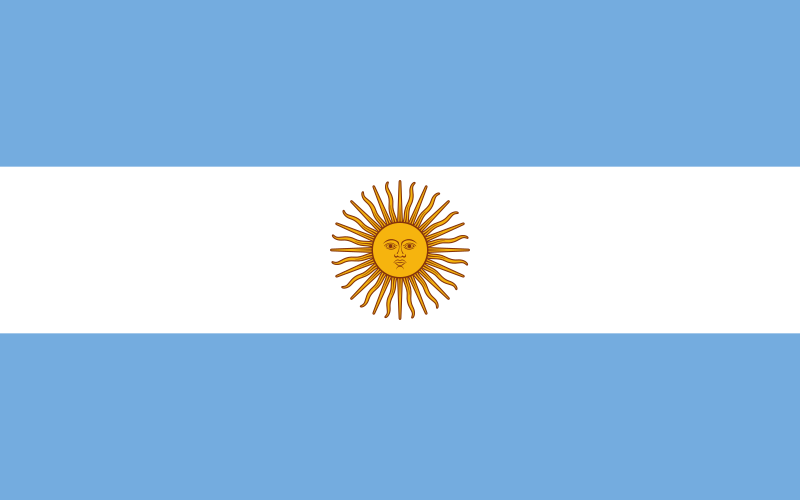The Argentina flag features three primary colors: Sky Blue, Yellow, Brown, White. The table below showcases the common and popular codes for these colors in HEX, RGB, and CMYK formats, along with Pantone (PMS), RAL, and NCS (Natural Color System) references. Remember, HEX and RGB codes are ideal for digital projects and web design (including HTML and CSS), while CMYK values are tailored for printing purposes.
The flag of Argentina is a prominent national symbol known for its simplicity and profound symbolism. Its design reflects the country's rich history, cultural identity, and aspirations.
Design and Elements:
Background:
- Colors: The flag consists of three horizontal bands of equal width: light blue (celeste), white, and light blue.
- Proportions: The flag's width-to-length ratio is 9:14.
Sun of May:
- Position: The Sun of May is centered in the middle white band.
- Design: The sun features a face with 32 alternating straight and wavy rays extending from it.
- Color: The sun is gold (yellow).
Symbolism:
Light Blue Bands:
- Representation: The light blue (celeste) color symbolizes the clear skies over Argentina and also represents the ideals of justice and truth. It is often associated with the Virgin Mary, a significant figure in Argentina's Catholic heritage.
White Band:
- Representation: The white color stands for peace and honesty. It symbolizes the snow of the Andes mountains and the purity and integrity of the Argentine people.
Sun of May:
- Representation: The Sun of May (Sol de Mayo) is a powerful national symbol that represents the Inca sun god Inti, reflecting Argentina's indigenous heritage. It also symbolizes the emergence of Argentina as a nation, specifically referring to the May Revolution of 1810, which marked the beginning of the country’s struggle for independence from Spanish rule. The sun's radiant and welcoming face signifies the nation's rise and prosperity.
Historical Context:
The flag of Argentina was designed by Manuel Belgrano, a leader in the Argentine War of Independence, and was first raised on February 27, 1812. The design was officially adopted on February 25, 1818. The Sun of May was added to the flag in 1818, further cementing its historical significance and symbolic depth.
Overall Significance:
The flag of Argentina is a deeply meaningful national emblem that encapsulates the country's identity, history, and values. The light blue and white bands symbolize the nation’s ideals, while the Sun of May represents Argentina's indigenous heritage and its fight for independence. As a national symbol, the flag inspires pride and unity among Argentines, reflecting their rich cultural heritage and their aspirations for the future.
